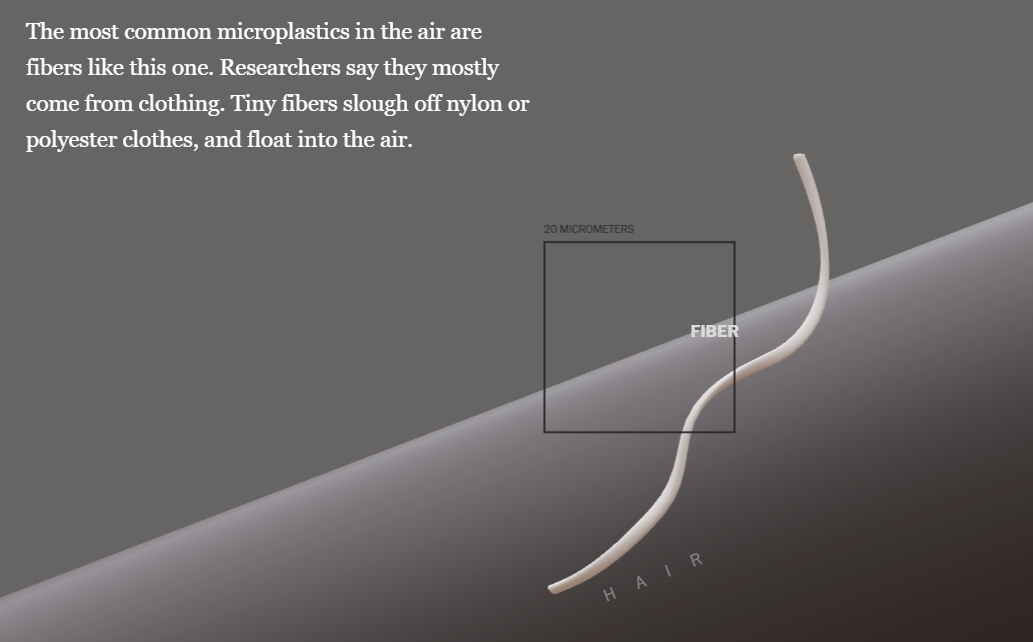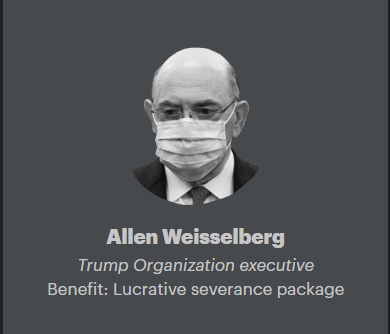EU parliamentary elections did not produce the expected authoritarian radical right sweep of power from the center and left. The center and center-right stayed intact. The NYT reports:
Voters in the 27 European Union member states sent a stern warning to mainstream political powers, wreaking havoc on French and, to a lesser degree, German politics and rewarding hard-line nationalist parties in a number of countries.
Even so, the radical right-wing wave dreaded by the European political establishment did not fully materialize; the center of European Union politics held. Here are the most important trends emerging from the elections.
The mainstream center-right group, the European People’s Party, performed strongly and finished first, not only maintaining its dominance in the European Parliament but adding a few seats to boot.
It was a sign that its strategy over the past two years, to integrate more right-leaning policies in order to stop voters from abandoning for further-right rivals, delivered.
The conservatives’ thunder was somewhat stolen by a blockbuster performance by Marine Le Pen’s ultranationalist National Rally in France. They scored twice the support of President Emmanuel Macron’s Renaissance party, prompting him to dissolve the National Assembly and call for snap legislative elections.
The center-right’s strong performance was not replicated in the two other major European Parliament centrist groups. The Progressive Alliance of Socialists and Democrats, traditionally the second-biggest power in the house, maintained its strength and, more or less, the number of its seats. But the Liberals lost big, weakening the informal centrist coalition of pro-European Union powers that generally underpins the passage of legislation in the European Parliament, despite their differences.
The Greens were the night’s biggest losers: having performed well in 2019 and emerged as an important progressive power in the Parliament, they lost a quarter of their seats in the new elections.
This was largely foreseen: Voters switched out of the environmentally focused party for two key reasons. Environmentally minded voters found that the Green agenda had been, to a high degree, integrated in other bigger mainstream parties. In a way, the Greens had lost their unique selling point.
But other voters felt that the green agenda in Europe has gone too far, hurting farmers and more broadly rural voters.
This feels somewhat comforting. Maybe democracies can survive the current authoritarian wave. Maybe the Democrats in America should consider integrating more right-leaning policies to stop voters from supporting the authoritarian radical right Republican Party.
__________________________________________________________
__________________________________________________________
For years, scientists on the hunt for microplastics have found them almost everywhere. First, they spotted tiny pieces of plastic in the ocean, in the bodies of fish and mussels. Then they found them in soft drinks, in tap water, in vegetables and fruits, in burgers.
Now researchers are discovering that microplastics are floating around us.
They are suspended in the air on city streets and inside homes. One study found that people inhale or ingest on average 74,000 to 121,000 microplastic particles per year through breathing, eating and drinking.
“There’s just so much plastic around us,” said Sherri Mason, researcher and sustainability coordinator at Pennsylvania State University at Erie. “We wear synthetic clothes, and those are shedding microplastics. We work on synthetic carpets. We buy food wrapped in plastic.”
Scientists don’t yet know the exact health effects of all those plastic particles — but their concerns are rising. In recent years, research has shown for the first time that humans are breathing, eating and drinking microplastics in much larger quantities than previously thought. And that plastic is burrowing its way into almost every major organ.
Not only can those tiny particles infiltrate many parts of the body, causing inflammation, but plastics also have a laundry list of chemical additives: flame retardants, lubricants, solvents. These chemicals, in turn, can leach out of particles that have reached some of our most vulnerable organs.
Of the more than 10,000 chemicals used in the manufacture of plastic, scientists have identified over 2,400 as potentially toxic.
As plastic production increases, so do the risks to human health. In 1950, the world produced 2 million metric tons of plastic every year; last year, it was over 400 million metric tons.
Plastics, unlike other substances, don’t break down — they simply break up into smaller and smaller pieces. Of the roughly 8 billion tons of plastic that have been produced since 1950, less than 10 percent has been recycled. The rest accumulate in landfills, in the oceans or on beaches, slowly sloughing off into microplastics or even tinier nanoplastics.
For researchers, tracing the impact of microplastics on human health is a daunting task. Each chemical added to plastics, along with each microplastic shape and size, could have a different impact on the body.
“They all have their own little toxic personalities,” Leslie said. “It’s an analytical nightmare.”
But scientists have found some links. In one study in Italy, people with microplastics in the lining of their arteries were more likely to suffer heart attack, stroke or death from any cause. Another report found that people with inflammatory bowel disease had higher concentrations of microplastics in their feces.
In laboratory tests on human cells, microplastics can cause tissue damage, allergic reactions and even cell death. The chemicals in plastics — like phthalates or bisphenol A — have also been shown to cause hormonal imbalances and disrupt the reproductive system. In mice, microplastics can cause behavioral changes and reproductive problems and can inhibit learning and memory. Researchers also recently discovered that certain cancer cells spread at an accelerated rate after exposure to microplastics; they are now looking into whether microplastics could help trigger early-onset cancer.
Kimberly Wise White, vice president of regulatory and scientific affairs for the American Chemistry Council, said in an email that the plastics industry has committed $15 million to research into microplastics. The group is currently investigating inhalation of microplastics and possible toxicities, she added.
Researchers warn that there aren’t yet studies showing a strong causal link between microplastics and a particular disease. People are exposed to myriad chemicals and toxins every day, making it difficult to identify what specific impacts microplastics have on the body. Scientists also still have yet to understand how long microplastics linger in certain organs and the concentration of the chemicals that they carry with them.
Scientists are most concerned about nanoplastics — tiny microplastics that are less than half the size of PM2.5, a form of air pollution that has been shown to cause lung problems, heart disease and premature death.
And scientists worry that in the meantime, microplastics are infiltrating our bodies with untold effects. There are no U.S. laws or regulations governing microplastics in the air or in food.
“We’re really looking at the Wild West,” Leslie said.
Experts say individuals can avoid some microplastics by steering clear of single-use plastic cups and bottles and avoiding plastic takeout containers. But those actions pale in comparison to the massive quantity of plastics added to the environment every year.
And waiting for certainty on the health effects of microplastics could be dangerous. “By the time we have that full answer, we’ll have already impacted human health,” Mason said. “It’ll be too little, too late.”
The plastics industry commitment of $15 million to microplastics research is puny compared to the scale of the problem. It is an insult. In one key way, the microplastics problem is like the gun violence problem. We are mostly ignorant but by now, we should not be. In the case of gun violence research, the NRA, gun manufacturers and mindless gun freaks in congress passed legislation in 1996 that stopped federal funding for gun violence research. To some extent, gun violence research is still limited by that old law.
With the plastics industry, they did a good job of keeping the microplastics issue quiet and downplayed as long as they could. The plastics industry was no doubt aware of the issue decades ago. But the capitalists did nothing to deal with it for the obvious reasons, profit with no social responsibility or accountability. That is no different than the oil industry knowing about global warming decades ago but doing everything in its vast power to derail dealing with the environmental and human problems that their profit stream causes. This is also not much different than the cigarette industry knowing about lung cancer and fighting for decades to deny and downplay it. People die, but most major brass knuckles capitalists do not care. To them, a pile of consumer corpses is a "public relations" problem for their hired professional liars to deal with.
These days, it seems to me more than reasonable to force companies to do the research to show how safe their products are. At present, the burden is on consumers and taxpayers to take their chances or pay for research to prove that products are safe. That situation is mostly the result of radical anti-government, anti-regulation political ideology working in tandem with brass knuckles capitalists who do not care about humans, the environment or democracy and the rule of law.
As far as I am concerned, it is long past time for regime change in America. The new regime would not include Democrats or Republicans as major players, preferably not players at all. Their endless streams of failures and betrayals of the public trust and democracy have earned both rotten parties no trust or respect.
__________________________________________________________
__________________________________________________________
Some memology to lighten the load:
How true, how true
“So, if we lie to the government it’s a felony. But if they lie to us its politics.” – falsely attributed to Bill Murray
Trump Demands Biden Remove Ad of Him Calling Dead Soldiers ‘Suckers’ and ‘Losers’ - The former president said only a “psycho” or a “very stupid person” would’ve made such statements.
(It's real -- You just can't make this stuff up)


















